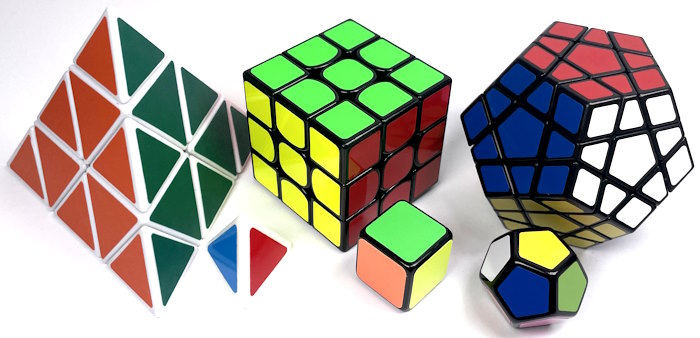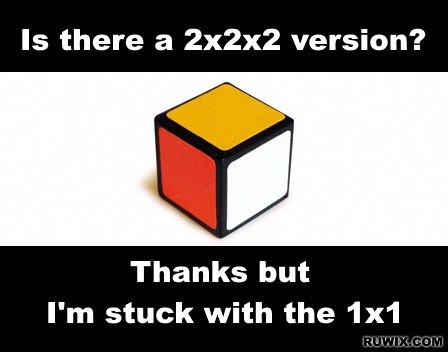1x1x1 Rubik's Cube Puzzle – Overview and Tutorial
The 1x1x1 is an interesting puzzle design that takes a new approach to the world of Rubik’s Cubes and twisty puzzles that we have never seen before. It has revolutionized the way we see the world of puzzling and has made an impact only comparable to that of the original Rubik’s Cube.

Origins Of The Cube
The cube, as a shape has been around for thousands of years, long before recorded history. It’s one of the most basic and natural geometric forms, with six equal square faces, and it’s been studied since ancient times. The Greeks, for example, recognized the cube as one of the five Platonic solids over 2,000 years ago. People have used cubes in practical ways, like making dice for games or creating tools and building blocks. It’s such a simple and universal shape that it’s been part of human culture and creativity for as long as we can trace.

Five Platonic Solids: Tetrahedron, cube, octahedron, dodecahedron, and icosahedron
The 1x1x1 Rubik’s Cube was actually the predecessor of the original Rubik’s Cube. Some people have criticized Rubik himself for stealing the idea, even though Rubik insists that the inventions were entirely independent.
“I came up with the idea for the Rubik’s Cube as a tool to help aid my teaching as a university lecturer. This puzzle, although vastly superior to mine, was only part of my inspiration. I looked upon it and thought “Hey, what if I made a cube out of those cubes” and then my puzzle took form.”
The 1x1 puzzle consists of six different colored uniform faces, and uses a unique mechanism that has been described by many as “way beyond its time”. The puzzle is not solved by making turns, but rather rotating the entire puzzle to find the solved state, something that no puzzles since have been able to accomplish.
Now, some of the fastest solvers in the world have been able to solve the cube in under 10 minutes, but this feat is still far from becoming the norm. The current Unofficial World Record for the 1x1 can't even be measured in seconds.
Below is a tutorial on how to solve the puzzle. This is a fairly complex tutorial so you have to give it time to understand fully.
Notation Overview
The 1x1x1 has a fairly complex notation due to its reliance on rotations to solve, so make sure you read each a few times through to ensure understanding:
- X – Rotates the entire puzzle by bringing the top face to the front.
- X' – Rotates the entire puzzle by bringing the top face to the back.
- Y – Brings the face on the right to the front.
- Y' – Brings the face on the left to the front.
- Z – Brings the front face down to the right.
- Z' – Brings the front face down to the left.
Make sure you understand these before you start the solve attempt. Reminder – You most likely will struggle to solve this puzzle for the first several times.
Solution Of The 1x1x1
The puzzle can be solved using the following steps:
- Performing the required rotations to complete the puzzle.
This may seem like a lot of steps, but if you approach each of them with care and caution you can solve the cube eventually.
Performing The Rotations
To rotate the cube properly, you must let go of the puzzle with one hand and turn the puzzle with the wrist of the other hand. This technique takes a while to get used to, but you should get the hang of it eventually. Once the puzzle is rotated, you can place the other hand back on it and regrip it with the other hand.
The following algorithm can be used to solve the puzzle:
X Y2 Z Y' X Y2 Z Y' Z2 Y X Z2 Y Z2 Y X Z2
Online 1x1x1 Solver
The online 1x1x1 Cube Solver is an invaluable tool for enthusiasts tackling this complex and unique puzzle. Unlike the standard Rubik’s Cube, the 1x1x1 Cube is significantly more challenging. For beginners, this complexity can be overwhelming, and a solver provides guidance, allowing them to learn and understand the techniques required to unjumble the puzzle. By observing the solving process, users can develop their own problem-solving skills and gain confidence in approaching similar puzzles independently.
The 1x1x1 Cube’s intricate misalignment can easily lead to dead ends, even for experienced solvers. Avoid frustration using the online solver program. Set up a random scramble, and see the program find the optimal solution in just a couple of moves.



